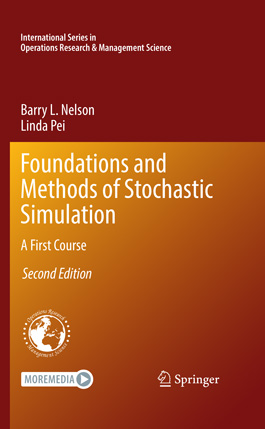Textbook Offers Modern Exploration of Computer Simulation
New edition of Professor Barry Nelson’s textbook offers overview of computer simulation theory and research
Computer simulation has transformed the efficiency and capability of many aspects of our lives. From healthcare delivery systems that make it easier to find and receive care, to financial management platforms to help management investments, to manufacturing and systems design to produce products and materials faster, simulation has helped myriad industries streamline complex services like never before.
Yet the process to optimize these processes takes time, and simulation researchers and practitioners are often faced with a technological bottleneck that forms when generating so much data.
“The more complex the system you are trying to model, the slower the simulation executes,” Northwestern Engineering’s Barry Nelson said. “When you are optimizing, you are trying different system designs to find the best one, which means you are not only using a slow simulation, but you’re also simulating many versions of it.”

Originally created in 2013 for his IEMS 435: Stochastic Simulation course, Nelson sought to craft an accessible and concise text for first-year PhD students.
“The book is meant to prepare researchers by offering a foundational understanding of the field. Even if students aren’t doing research in simulation, they often will use simulation as part of their research,” Nelson said. “Graduate students should also be able to solve problems, which is why I included the programming element. The book provides sound ways to develop real simulation that could be used to solve problems.”
When Nelson wrote the first edition of Foundations, he designed the exercises so they could be completed using Excel’s Visual Basic for Applications. Since then, Python has emerged as the leading ubiquitous programming language, so Nelson revamped the book’s programming component. To achieve this, he collaborated with Linda Pei, a PhD candidate in his research group and expert in applying Python to design powerful and theoretically robust systems for large-scale simulation optimization, parallel statistical algorithms, and statistical learning.

“We created PythonSim, a toolbox for object-oriented discrete-event simulation,” Pei said. “PythonSim makes it easy for students, educators, and researchers to start creating their own simulations from scratch. Python's numpy and pandas libraries also make generating, writing, and analyzing simulation data uncomplicated.”
Nelson said a new edition of his book was necessary given how simulation technologies are rapidly evolving, particularly the field of simulation optimization. High-performance parallel cloud computing, for example, wasn’t mentioned in the book’s first edition, yet has emerged as a valuable tool to help relieve the bottleneck created during large-scale simulations by providing a more cost-effective method to simultaneously test system designs. This trend will continue in the years ahead.
“If you're using 1,000 parallel processes, that means you can simulate 1,000 systems at a time instead of one, so it speeds simulations up tremendously,” Nelson said. “Five years from now, the field of simulation will look very different than it does now. Computing really drives the field.”